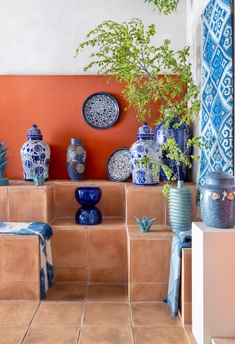

Tenango Embroidery

What is Tenango embroidery?
Tenango embroidery is an embroidery technique originating in the municipality of Tenango de Doria, in the Otomí mountains of the State of Hidalgo. The characteristic of these textiles is the combination of colors and the representation of flora and fauna, although they also represent scenes of daily life, religion, the Day of the Dead, the harvest, etc. They carry symbolic languages giving life to beautiful scenes with an almost fantastic appearance.
In recent years, tenangos have become one of the most famous Mexican textiles worldwide, which is why they are considered part of Mexico's cultural heritage.
The process of elaboration


The embroidery must be done properly to prevent the blanket and the lines of the drawing from being visible through the threads. The Tenango stitch is small, crossed and tight.

The back of the fabric should not have any folds and the stitch should only be visible as a line that marks the outline of each figure. This embroidery technique is known as crow's foot, goat's foot or inverted shadow stitch.

The production of each of these hand-embroidered tenangos takes 6 to 8 weeks of work.
Tenango Embroidery Artisan Creators
Here you can meet some of the Artisan Creators dedicated to Tenango embroidery and who make pieces for Huakal.



Discover their creations
Collections of Huakal pieces made using the Tenango embroidery technique









- Regular price
- €80,00
- Regular price
-
€80,00 - Sale price
-
€80,00
- Unit price
- /per









- Regular price
- €80,00
- Regular price
-
€80,00 - Sale price
-
€80,00
- Unit price
- /per







- Regular price
- €200,00
- Regular price
-
€200,00 - Sale price
-
€200,00
- Unit price
- /per









- Regular price
- €80,00
- Regular price
-
€80,00 - Sale price
-
€80,00
- Unit price
- /per







- Regular price
- €80,00
- Regular price
-
€80,00 - Sale price
-
€80,00
- Unit price
- /per









- Regular price
- €80,00
- Regular price
-
€80,00 - Sale price
-
€80,00
- Unit price
- /per









- Regular price
- €2.300,00
- Regular price
-
€1.000,00 - Sale price
-
€2.300,00
- Unit price
- /per







- Regular price
- €200,00
- Regular price
-
€200,00 - Sale price
-
€200,00
- Unit price
- /per

